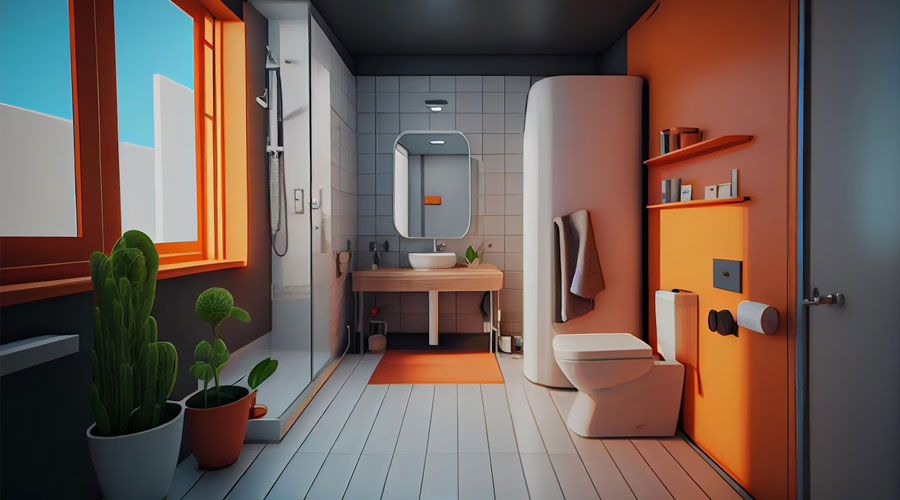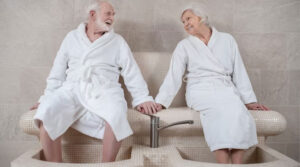When it comes to acquiring walk-in baths, individuals, particularly seniors and people with disabilities, often face significant financial challenges. Walk-in baths are specialized fixtures designed to enhance safety and accessibility, enabling independent living and reducing the risk of accidents. However, their costs can be prohibitive for those on limited budgets or facing medical expenses. Here, we will guide you about the financial obstacles individuals face, the importance of government assistance programs, and explore various options available to ensure access to essential home modifications, including walk-in baths.
Financial Challenges Faced by Individuals in Need of Walk-in Baths
1. Affordability Concerns
Walk-in baths typically involve substantial upfront costs, including the purchase and installation expenses. Moreover, additional modifications to the bathroom might be necessary to accommodate the new fixture. Finding the funds for these modifications can pose a significant challenge for individuals already grappling with medical bills and daily living expenses.
2. Limited Insurance Coverage
In many cases, traditional health insurance policies do not cover the expenses associated with walk-in baths. Since these fixtures are often viewed as home modifications rather than medical necessities, individuals are left to navigate the financial burden on their own. This lack of coverage further exacerbates the affordability challenges faced by those in need.
The Importance of Government Assistance Programs
Government assistance programs play a vital role in providing access to essential home modifications, including walk-in baths. These programs believe in bridging the gap between financial limitations and the necessary accommodations individuals require for their safety and well-being.
1. Financial Aid and Grants
Various government assistance programs offer financial aid and grants specifically tailored to assist individuals with home modifications. These programs recognize the importance of creating a safe living environment and provide financial support to eligible individuals to help cover the costs associated with installing walk-in baths.
2. Accessibility and Independent Living
Government assistance programs acknowledge the significance of maintaining independence and accessibility for individuals with mobility challenges. By offering financial assistance, they make sure that people can persist to live in their own homes securely, dropping the need for institutional care and endorse a superior quality of life.
Exploring Options on Government Assistance for Walk-in Baths
There are several range of government assistance options available for individuals in need of walk-in baths. By understanding these options, individuals can make informed decisions and take advantage of the support and resources provided. You can search online for the specific programs, grants, and initiatives that can provide financial support, allowing individuals to access these essential home modifications and improve their quality of life.
State-Specific Assistance Programs
Various state-specific assistance programs provide financial support for walk-in baths and home modifications. These programs vary by state and often have specific eligibility criteria and application processes.
Researching state-specific assistance programs is crucial to identify potential sources of financial support. Examples include state-funded programs for individuals with disabilities, housing assistance programs, or grants specifically dedicated to home modifications. To get started
1. Contact your state's Department of Health and Human Services
Reach out to the agency responsible for overseeing Medicaid, disability services, or housing programs in your state. They can provide information on available assistance programs.
2. Explore local community centers and disability advocacy groups
These organizations may have knowledge of local assistance programs and can offer guidance on accessing financial support for walk-in baths.
3. Utilize online resources
Many states have websites or online directories that compile information on state-specific assistance programs. These resources can provide valuable information on eligibility requirements, application procedures, and available funding.
By exploring state-specific assistance programs, individuals can potentially find financial support to help cover the costs of walk-in baths and related home modifications.
Local Government Initiatives and Grants
Local government initiatives and grants can be valuable resources for individuals seeking home modifications, including walk-in baths. Local municipalities or county governments may offer programs aimed at improving accessibility and safety in homes. These initiatives could include grants, low-interest loans, or partnerships with nonprofit organizations to assist with funding walk-in baths and related modifications.
To explore local government initiatives and grants
1. Research local government programs
Check the websites of your local municipality or county government for information on accessibility and home modification programs.
2. Contact relevant departments or agencies
Reach out to departments responsible for housing, community development, or disability services to inquire about available initiatives and grants.
3. Collaborate with nonprofit organizations
Nonprofit organizations specializing in home modifications or disability services may have partnerships or information on local government initiatives. Reach out to these associations for the required direction, help and support. Local government initiatives and grants can supplement other assistance programs, providing additional financial support for individuals in need of walk-in baths.
Nonprofit Organizations and Charities
Several nonprofit organizations and charities offer assistance for home modifications, including walk-in baths. These organizations focus in offering support to folks with disabilities, low-income families, and older adults who require accessibility upgrading in their homes. These organizations may provide various types of support and financial aid, ranging from direct funding for walk-in baths and related modifications to organizing volunteer efforts and providing resources for affordable or discounted products.
To connect with relevant nonprofit organizations and charities
1.Research organizations specializing in home modifications
Explore the websites of organizations that focus on home modifications and accessibility improvements. These websites often provide information on their mission, programs, and application processes.
2. Contact local disability advocacy groups and community centers
Reach out to local organizations dedicated to supporting individuals with disabilities or seniors. These organizations can provide referrals and recommendations for nonprofit organizations and charities offering assistance.
3. Utilize online directories and databases
Online resources compile information on nonprofit organizations and charities specializing in home modifications. These directories can help individuals find organizations that align with their specific needs and geographical location.
4. Network with healthcare professionals and social workers
Healthcare professionals and social workers often have knowledge of nonprofit organizations and charities that offer assistance for home modifications. Networking with these professionals can provide valuable leads and connections.
Connecting with nonprofit organizations and charities can provide individuals with additional resources and support in obtaining financial assistance for walk-in baths.
Tax Deductions and Credits
Individuals may qualify for tax deductions or credits related to home modifications, including walk-in baths, if the modifications are deemed medically necessary. To discover potential tax benefits, it's significant to know the requirements and limits allied with tax deductions and credits.
Qualifying for Tax Deductions or Credits
To qualify for tax deductions or credits for walk-in baths
1. Obtain a doctor's recommendation
A doctor's recommendation is typically required to support the medical necessity of the home modification, including the walk-in bath.
2. Meet the requirements set by the IRS
Tax deductions or credits are subject to precise needs set by the Internal Revenue Service (IRS). These requirements may include limits on the cost of the modification and the taxpayer's adjusted gross income.
3. Consult with a tax professional
To ensure compliance with tax regulations and identify potential tax benefits, consult with a tax professional or accountant who specializes in deductions and credits related to home modifications.
Investigating Tax Benefits for Walk-in Baths
To investigate potential tax benefits for walk-in baths
1. Review IRS guidelines
Familiarize yourself with IRS guidelines regarding medical expense deductions and credits. The IRS website provides detailed information on eligible expenses and requirements.
2. Consult with a tax professional
Seek advice from a tax professional to assess your eligibility for tax deductions or credits. They can guide you through the process and help you maximize any available tax benefits.
3. Maintain proper documentation
Keep thorough records of all expenses related to the walk-in bath installation and any supporting documentation, such as doctor's prescriptions and receipts. These documents will be essential when filing your taxes.
Access to walk-in baths is essential for individuals seeking increased safety and accessibility in their homes. While the financial challenges can be significant, government assistance programs, state-specific initiatives, nonprofit organizations, and potential tax benefits can help alleviate the burden. By exploring these options, individuals can find the necessary resources and financial support to make home modifications, such as installing walk-in baths, a reality. It is imperative to research and understand the eligibility prerequisites, application procedure, and coverage limits of each program to ensure a victorious outcome.
Additionally, staying informed about updates to government programs and seeking professional advice when necessary will further assist individuals in navigating the complex landscape of government assistance and tax regulations.
So, by following these guidelines get the best financial help possible to give a comfortable and independent living experience to your loved ones through installing walk-in baths for them.





